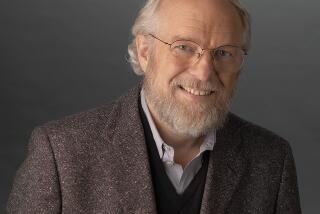George E. Pake, 79; Physicist Directed Xerox’s Famous Palo Alto Research Center
- Share via
George E. Pake, a physicist who helped found the research lab that gave birth to the first personal computer and other tools of the digital age, has died. He was 79.
Pake died March 4 of heart failure at his Tucson home.
Pake’s broad career as a university physics professor, nuclear scientist and research director earned him a National Medal of Science in 1987.
In 1970, Pake helped establish Xerox Corp.’s Palo Alto Research Center, or PARC, a hothouse for hundreds of scientists whose inventions helped launch the computer revolution in the 1970s and ‘80s.
The mouse-driven graphical user interface that makes PCs accessible without cryptic commands was initially developed at Xerox PARC. So was the laser printer and Ethernet, a technology protocol that allows computers to communicate with each other.
“George to me was a giant amongst giants,” said John Seely Brown, a former director of PARC. “He was not only a phenomenal intellect and scientist, he was also a gentleman.”
Pake rarely participated in research during his eight-year tenure at PARC, but he is credited with creating an environment where scientists flourished. Although PARC relied on Xerox for funding, Pake persuaded the company to give the group free rein and plenty of time.
“George used to say he’d be surprised if anything came out of the lab within five years that would have tremendous impact on the corporation,” said John Shoch, who joined PARC in 1971 as a research fellow. “He set the time horizon pretty far out. That was pretty unusual in the context of a corporation.”
Soft-spoken and bent by scoliosis, Pake had a low-key, nonconfrontational management style, said former colleagues. He was often seen wandering around the research center, casually talking to staff members, said Kathy Jarvis, a longtime PARC librarian.
“He managed by walking around,” Jarvis said. “He knew your name, always. Always.”
Among Pake’s talents was picking promising young scientists from sundry disciplines and throwing them together.
“He believed that having multiple disciplines was a way to reinvent the future,” Brown said. “An example of what came out of that was the laser printer,” which required contributions from physicists and computer scientists.
Often, however, representatives of the different disciplines clashed in their competition for funds.
Resentment grew among some in the computer science lab who felt their funding levels were disproportionately small compared with their contributions.
“Pake was a physicist who never fully understood the computer science research there,” even though much of PARC’s notoriety comes from this branch of research, said Robert Taylor, who oversaw the computer science lab from 1970 to 1983 and frequently fought with Pake over resources. “It’s a bit ironic, you see.”
Others, however, saw the competition as a healthy part of the culture at PARC.
“That tension was what made the place so incredible,” said Lynn Conway, a PARC researcher from 1973 to 1983 who worked on chip-design technologies.
“It was able to accommodate brilliant and powerful personalities,” Conway said. “It gave them the freedom to try to do things their way. So it’s only natural that you had great passions and conflicts along with all the amazing things that happened there.”
Pake was born in Jeffersonville, Ohio, in 1924. After earning a doctorate in physics from Harvard University, he became a professor at Washington University in St. Louis, where he wrote a paper on nuclear magnetic resonance imaging that has since been cited hundreds of times by other scientists.
Pake left Xerox in 1986 to direct the nonprofit Institute for Research on Learning in Palo Alto. He served as emeritus director until his death.
He is survived by his wife, Marjorie, of Tucson; daughter Catherine Pake of Portland, Ore.; and sons Warren Pake of Tucson, Stephen Pake of Los Angeles and Bruce Pake of St. Louis.
More to Read
Inside the business of entertainment
The Wide Shot brings you news, analysis and insights on everything from streaming wars to production — and what it all means for the future.
You may occasionally receive promotional content from the Los Angeles Times.










